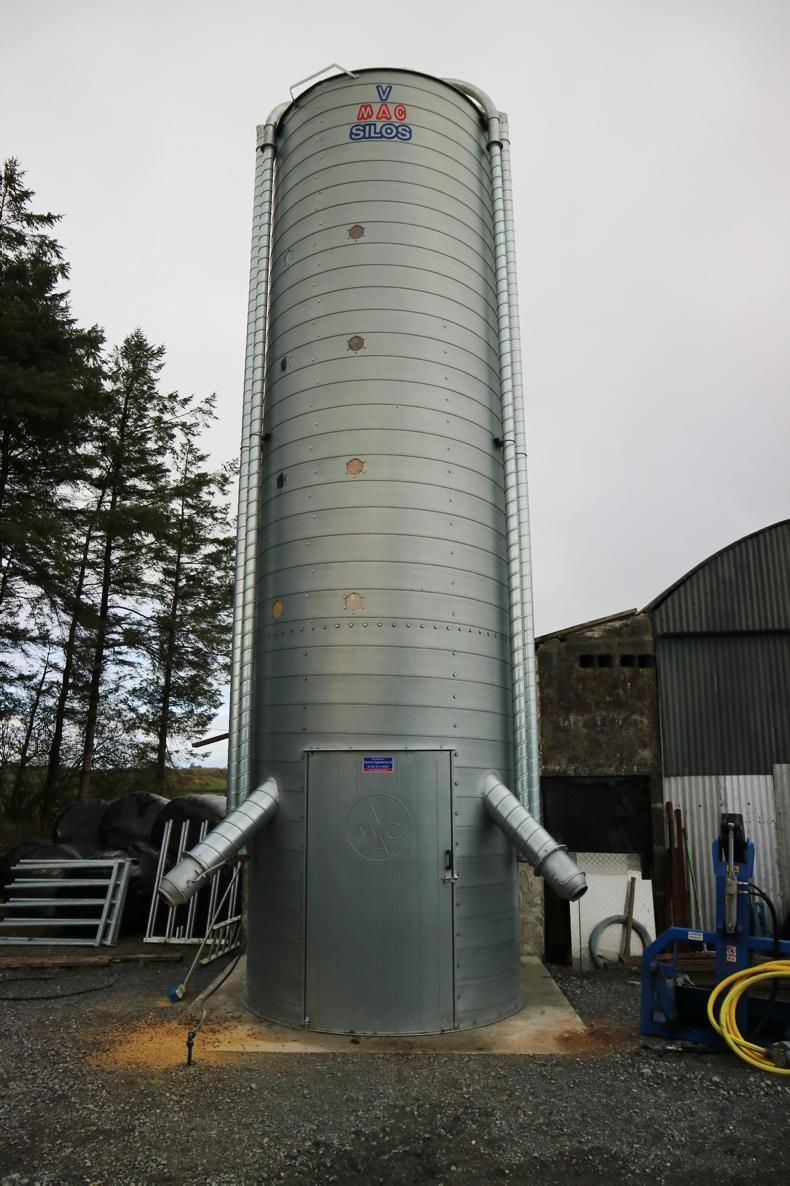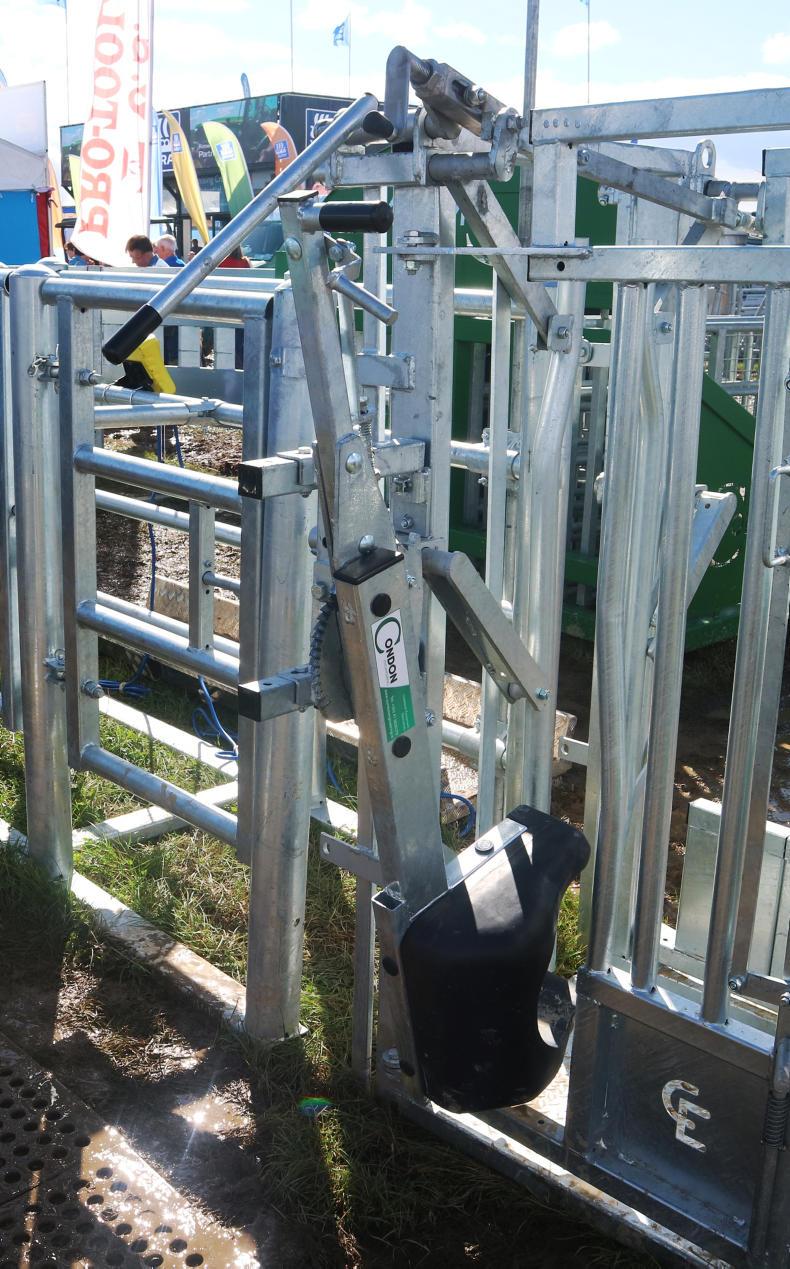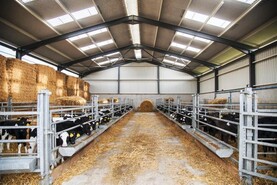Calving pens
One of the most important aspects of any calving pen is the ability to exit quickly if you encounter an agitated cow.
Having slip-through points or an escape gate could be the difference between life and death when dealing with a freshly calved cow.
The escape gate could be left open when entering the pen and while the cow would be unable to fit through it would provide a quick exit for the farmer.
Being able to safely restrain a cow is also vital so having a good calving gate is a must.
A simple addition to the head gate is to have a small gate fitted with mesh that can be closed over.

It is important to have a good calving gate for your calving pen, so that restraining a cow can be done safely.
This will prevent a calf from slipping out through the gate, which can lead to an agitated cow and the labour involved with returning the calf.
However, one of the biggest management practices that you can undertake to improve safety around calving is to cull aggressive cows.
It is important that access to a calving pen can be independent of any other pen.
This can be done by having a small access door at the back of the shed, or by having a passageway running along the back of the pen.
For an existing shed it may be difficult to have access passageways, but one investment that could be made is to install a gate with an escape gate.
Lighting is also important for a calving pen and having night-time lights that can be used with a calving camera should be installed when building the shed, even if the camera is not being installed initially.
A lighting level of 100 lux must be provided for calving pens. Red-lighting is an option for illuminating the shed during the night.
Cows will barely detect red light while it can still give sufficient lighting to observe the cow. Another option is to use a light of less than 30 lux.
Meal bins
Back injuries around calving can be a particularly common affliction and farmers should be mindful of this before they go lifting calves with a typical suckler calf weighing 40-50kg.
Eliminate any unnecessary moving or handling of calves.
When talking about back injuries, meal feeding can be one of the most labour intensive jobs around a beef and suckler farm.

Meal bins can save farmers injuries to their backs when having to feed meal across the farm.
Farmers of all enterprises are now eligible for a TAMS grant on meal bins and it is an investment that should be seriously considered.
Bending down into smaller meal bins and lifting a bucket of meal out can put real pressure on a farmer’s lower back, especially if this is a movement repeated several times a day, every day.
Grant aid of 40% for a general applicant, or 60% for a young, trained farmer is available. It is important that you apply to the scheme and get approval before you purchase the bin. Otherwise you will not be eligible for grant aid.
Head scoop
Another investment that may appeal to suckler farmers is a head scoop.

Head scoops are good for farmers who run a one-man operation and have to dose cattle alone.
Many suckler farms are a one-man operation and trying to dose cattle by yourself is not an easy task.
TAMS
A TAMS grant is available for these and they have a reference cost of €379 excluding VAT.
There is a large range of head scoops out there with more expensive options, with a plastic mould head scoop ranging from €550 up to €715 including VAT.
The minimum investment through TAMS is €2,000 so an investment such as a head scoop could be combined with retrofitted safety cages to the roof lights, for example.

TechnologyTechnology also has its part to play when it comes to reducing fatigue and improving safety around calving.
A Moocall calving sensor, combined with a calving camera can be a great way to observe cows when calving, especially for a part-time farmer working off-farm.
The sensor itself costs €329, while a yearly fee of €150 is also applicable after the first year.
Calving pens
One of the most important aspects of any calving pen is the ability to exit quickly if you encounter an agitated cow.
Having slip-through points or an escape gate could be the difference between life and death when dealing with a freshly calved cow.
The escape gate could be left open when entering the pen and while the cow would be unable to fit through it would provide a quick exit for the farmer.
Being able to safely restrain a cow is also vital so having a good calving gate is a must.
A simple addition to the head gate is to have a small gate fitted with mesh that can be closed over.

It is important to have a good calving gate for your calving pen, so that restraining a cow can be done safely.
This will prevent a calf from slipping out through the gate, which can lead to an agitated cow and the labour involved with returning the calf.
However, one of the biggest management practices that you can undertake to improve safety around calving is to cull aggressive cows.
It is important that access to a calving pen can be independent of any other pen.
This can be done by having a small access door at the back of the shed, or by having a passageway running along the back of the pen.
For an existing shed it may be difficult to have access passageways, but one investment that could be made is to install a gate with an escape gate.
Lighting is also important for a calving pen and having night-time lights that can be used with a calving camera should be installed when building the shed, even if the camera is not being installed initially.
A lighting level of 100 lux must be provided for calving pens. Red-lighting is an option for illuminating the shed during the night.
Cows will barely detect red light while it can still give sufficient lighting to observe the cow. Another option is to use a light of less than 30 lux.
Meal bins
Back injuries around calving can be a particularly common affliction and farmers should be mindful of this before they go lifting calves with a typical suckler calf weighing 40-50kg.
Eliminate any unnecessary moving or handling of calves.
When talking about back injuries, meal feeding can be one of the most labour intensive jobs around a beef and suckler farm.

Meal bins can save farmers injuries to their backs when having to feed meal across the farm.
Farmers of all enterprises are now eligible for a TAMS grant on meal bins and it is an investment that should be seriously considered.
Bending down into smaller meal bins and lifting a bucket of meal out can put real pressure on a farmer’s lower back, especially if this is a movement repeated several times a day, every day.
Grant aid of 40% for a general applicant, or 60% for a young, trained farmer is available. It is important that you apply to the scheme and get approval before you purchase the bin. Otherwise you will not be eligible for grant aid.
Head scoop
Another investment that may appeal to suckler farmers is a head scoop.

Head scoops are good for farmers who run a one-man operation and have to dose cattle alone.
Many suckler farms are a one-man operation and trying to dose cattle by yourself is not an easy task.
TAMS
A TAMS grant is available for these and they have a reference cost of €379 excluding VAT.
There is a large range of head scoops out there with more expensive options, with a plastic mould head scoop ranging from €550 up to €715 including VAT.
The minimum investment through TAMS is €2,000 so an investment such as a head scoop could be combined with retrofitted safety cages to the roof lights, for example.

TechnologyTechnology also has its part to play when it comes to reducing fatigue and improving safety around calving.
A Moocall calving sensor, combined with a calving camera can be a great way to observe cows when calving, especially for a part-time farmer working off-farm.
The sensor itself costs €329, while a yearly fee of €150 is also applicable after the first year.










 This is a subscriber-only article
This is a subscriber-only article









SHARING OPTIONS: